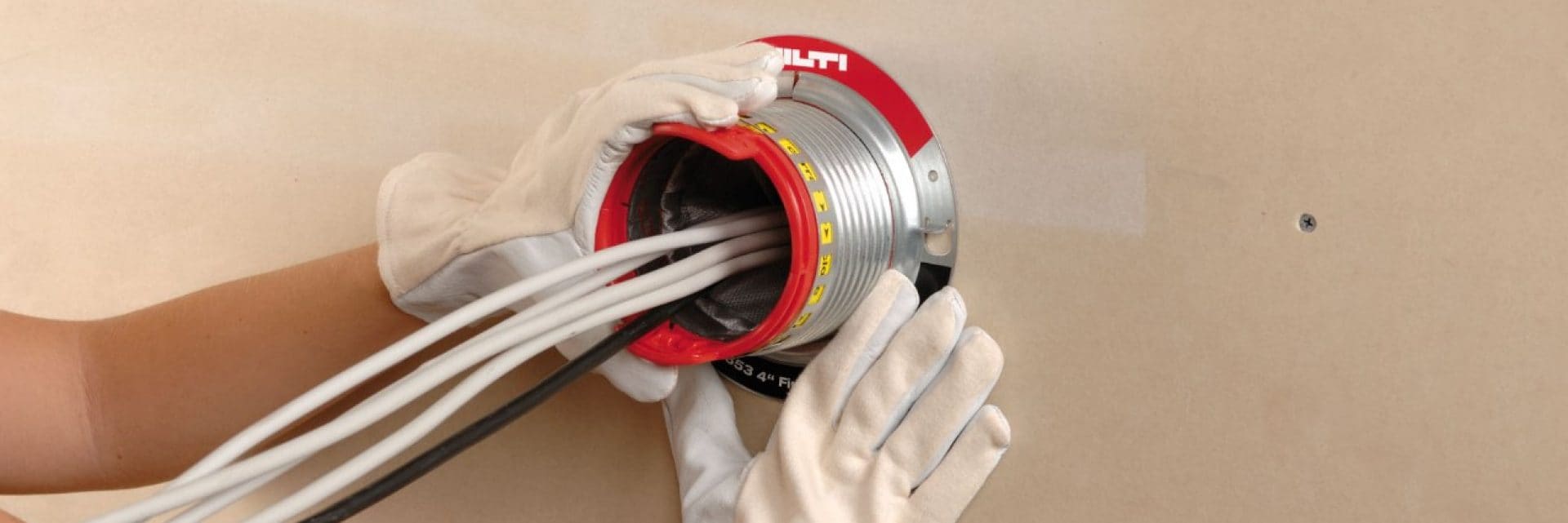FIRESTOP FOR NEW AND EXISTING PENETRATIONS
Our Hilti firestop systems are designed for both new builds and for refurbishments.
We offer a wide range of firestop products to help with a variety of situations onsite.
For new installations, you can firestop new cables with discs, collars or sealants after installation. Or you can install firestop devices such as the speed sleeve in the wall or floor before the cables are pulled.
If you need to fill a large opening with multiple cables and/or cable trays you can use our blocks or rectangular cable collars.
If you need to fill irregular openings, it’s best to use rectangular cable collars, foams or sealants.

